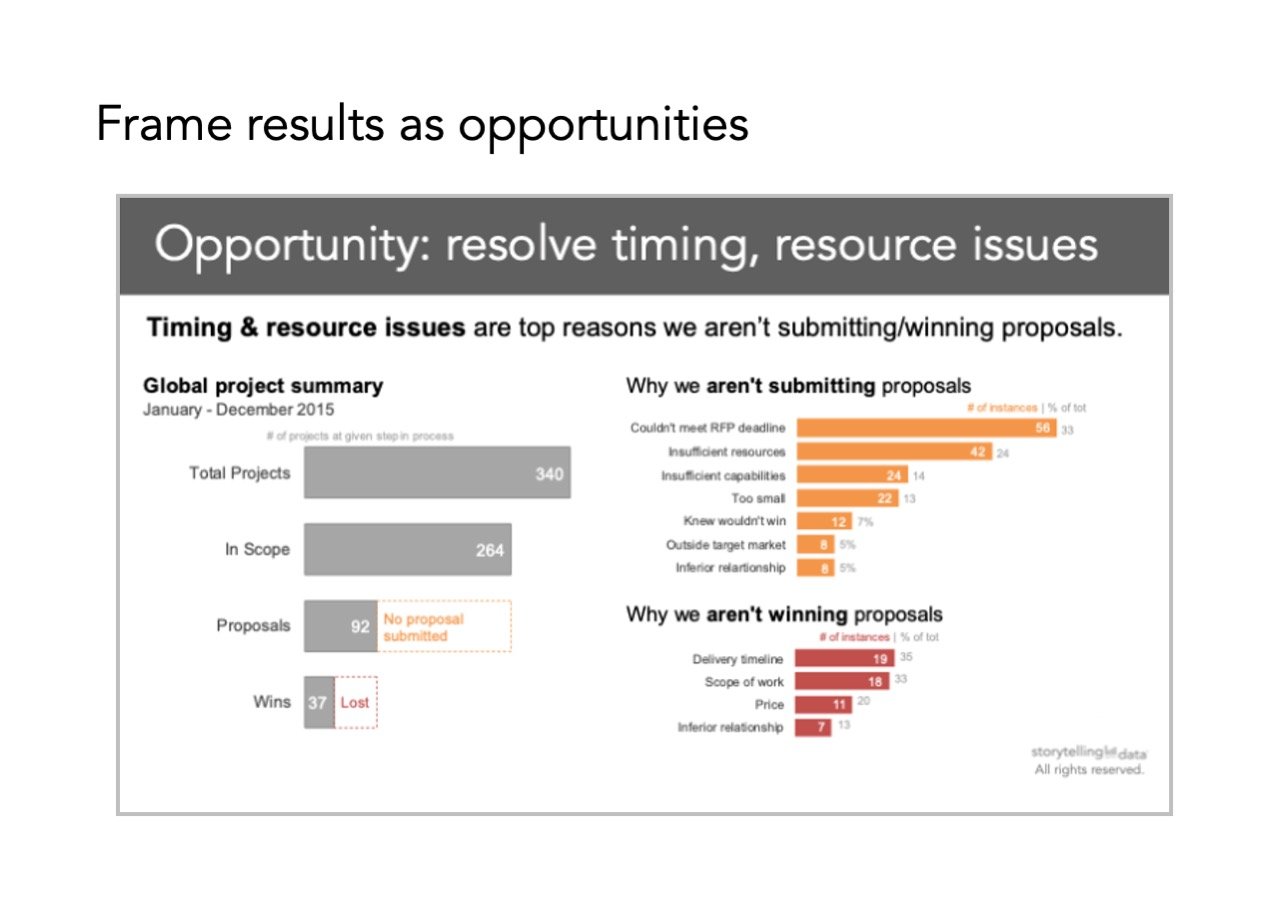the art of delivering bad results
Data doesn't always tell a happy story. For example, when a marketing campaign doesn't reach its desired performance or when a new product your company is launching receives negative customer feedback. It's tempting to hide or minimize less-than-ideal outcomes, but we have a responsibility to present all findings accurately. Here are five tactics for positioning results that don't meet expectations.
Embrace transparency. First and foremost, don't shy away from the truth. Transparency builds trust with your audience. When presenting unfavorable data, be direct and honest about what the numbers show. You don’t have to dwell on the negative, but be forthright and acknowledge it clearly. Then, confidently (and quickly) move on to potential solutions or recommendations.
Practice empathy. When presenting unfavorable results, consider how this information may affect your audience, both professionally and emotionally. Even in business settings, we are all human beings, and empathy matters. Recognize and acknowledge their potential disappointment using neutral, factual language. Tailor your delivery to address their concerns, and be prepared to discuss implications and next steps.
Provide context. Bad results rarely exist in isolation. Help your audience understand the broader context surrounding the data—not in search of an excuse, but rather an explanation. Were there external factors at play? How do these data compare to historical trends or industry benchmarks? When needed, consult for context and have conversations with others to get a robust understanding of the situation. Putting a perceived negative outcome in a broader context can help frame the discussion more productively (see the next point below) and potentially soften its emotional impact.
Focus on learning and action. Instead of viewing poor results as failures, position them as opportunities for growth and improvement. Things may feel bad today, but by learning from what went wrong, we can inform future strategies and decision-making. By shifting the focus to learnings and action items, you transform a potentially negative story into a constructive one.
Tell a complete story. Remember, unexpected findings are often just one part of a larger narrative. Perhaps they represent a temporary setback in an otherwise positive trend or highlight an area ripe for innovation. By zooming out and considering the complete picture, you can present a more balanced and nuanced story.
Here are a few examples of how you can present disappointing data discoveries fairly, accurately, and in a way that drives meaningful action.
By applying the tips above, you can navigate the challenge of presenting less-than-ideal results with grace and professionalism. Remember, effective data storytelling isn't always about having good news to share—it's about communicating all the information in a clear and helpful way.


